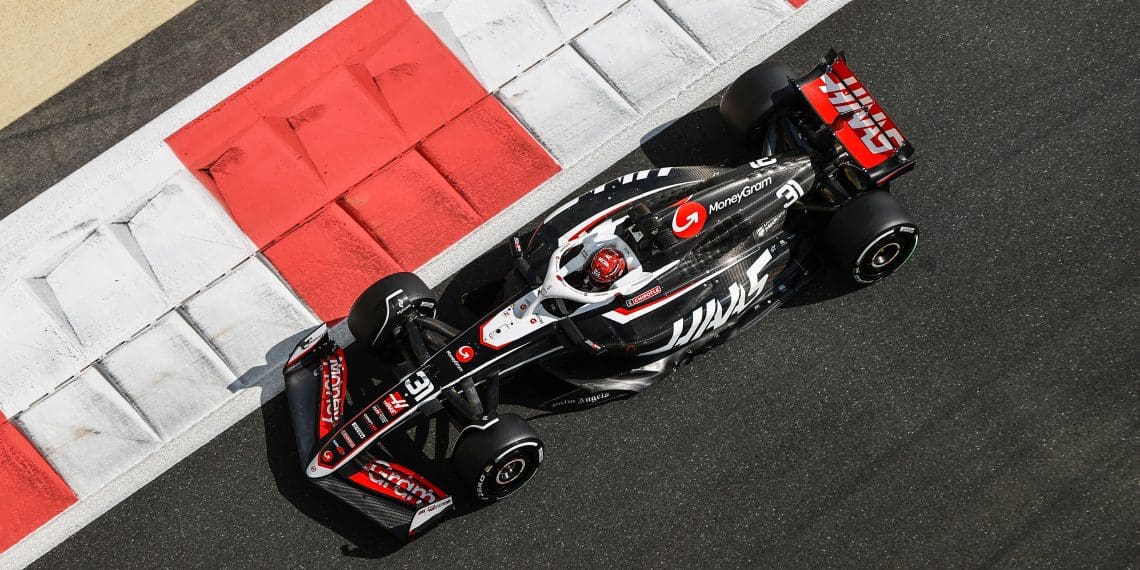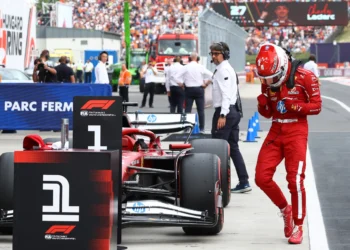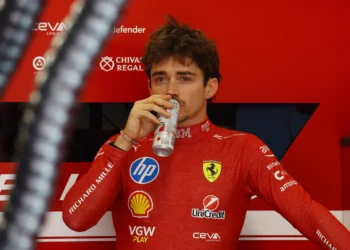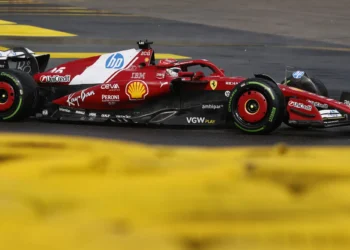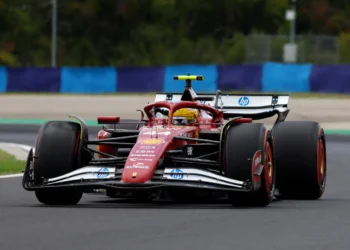Despite forming a technical alliance with Toyota, Haas F1 Team has decided against using Toyota’s renowned wind tunnel in Cologne, instead opting to continue its development in Ferrari’s Maranello facility.
While Toyota is set to provide key technical support, including a simulator and Testing of Previous Car (TPC) programme, Haas Team Principal Ayao Komatsu has explained why switching wind tunnels simply doesn’t make sense.
Why Haas Is Sticking with Ferrari’s Wind Tunnel
Komatsu believes using Ferrari’s facility is a “win-win” for Haas, given the close technical ties between the two teams.
“For the foreseeable future, we have no plans to move out of the Maranello wind tunnel,” Komatsu told Autosport. “For me, it’s a win-win situation.”
His reasoning? By using Ferrari’s cutting-edge wind tunnel, Haas can benefit from Ferrari’s research and problem-solving without additional investment.
“Because us and Ferrari are of course fighting in the same championship, whatever specific issue you have on your wind tunnel hardware, which is related to the specifics of the [ground effect] regulations in this generation, Ferrari is doing the research, they are addressing it, so we take the benefit without us doing the research.”
Toyota’s Wind Tunnel: No Longer the F1 Benchmark?
While Toyota’s Cologne wind tunnel was once one of the most advanced in F1, technology has moved forward.
- McLaren used it for over a decade before completing its own state-of-the-art wind tunnel in 2023.
- Ferrari has invested heavily in upgrading its wind tunnel, including a rubberized rolling road to better mimic track conditions.
- The Toyota wind tunnel currently lacks this key technology, making it less relevant for modern F1 aerodynamics.
“I don’t see any point in us moving out of the Maranello simulator to go to the Toyota wind tunnel, which currently doesn’t have [a ‘rubberized’ floor],” Komatsu added.
“OK, Andretti is using it, but they’re not competing in F1 yet.”
Haas Expanding UK Operations, But Sticking with Ferrari for Now
While Haas is looking to streamline its multi-national operations—currently spread across the US, UK, and Italy—moving aerodynamic development to Cologne wouldn’t be practical financially or logistically.
According to Autosport, Haas is searching for a new UK headquarters to consolidate performance operations, but their wind tunnel and simulator work will remain separate.
One big improvement from the Toyota deal is that Haas will now have its own dedicated simulator, rather than relying on Ferrari’s limited access sim days in Maranello.
“If you look at the simulator, last year we did definitely not more than 15 days,” Komatsu admitted.
“What other teams only do 15 days of simulator running? During the race weekend, we don’t do any simulator running at all. Again, I think everybody else does.”
With a new Toyota-backed simulator coming, Haas will finally be able to run simulations in real-time during race weekends, catching up to the development speed of top teams.
Bottom Line: Ferrari Still Plays a Key Role in Haas’ Success
Despite Toyota’s growing influence on Haas, Ferrari remains a crucial technical partner.
- Haas will continue using Ferrari’s wind tunnel for car development.
- A new Toyota-backed simulator will improve race-weekend data analysis.
- The team is looking to consolidate operations with a new UK HQ.
For now, Haas is balancing its relationship between Ferrari and Toyota—leveraging Ferrari’s cutting-edge wind tunnel technology while expanding its own resources with Toyota’s simulator expertise.

